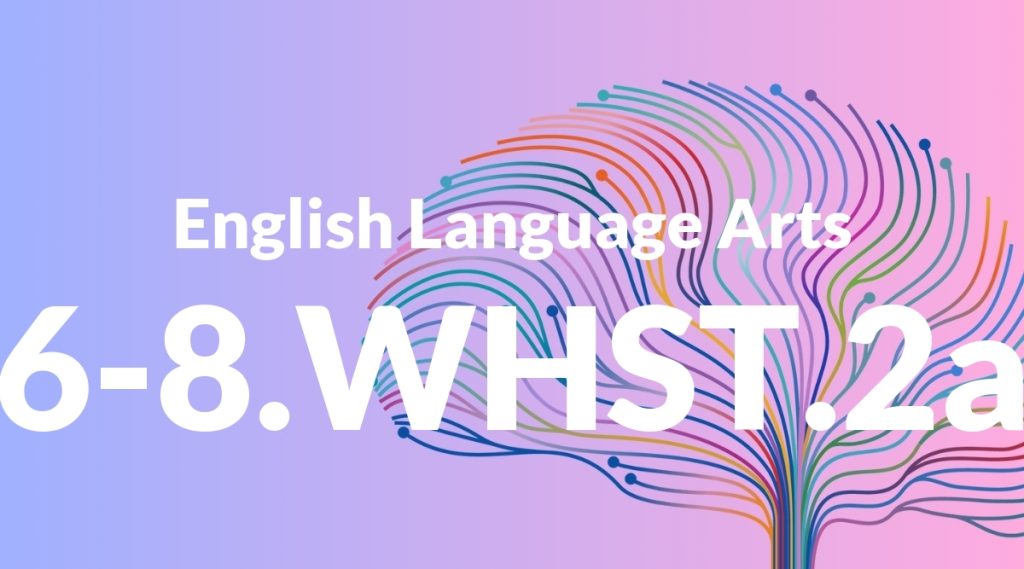Standard: 6-8.WHST.2a – Introduce a topic clearly, previewing what is to follow; organize ideas, concepts, and information into broader categories as appropriate to achieving purpose; include formatting (e.g., headings), graphics (e.g., charts, tables), and multimedia when useful to aiding comprehension.
Grade level: Grade 6-8
Subject: English Language Arts
Domain: Writing: History, Science & Technical Subjects
Teacher Overview
This standard focuses on helping students introduce topics clearly and organize their ideas and information in a logical manner. It emphasizes the importance of using formatting, graphics, and multimedia to aid comprehension. Mastering this standard is crucial as it builds foundational skills for effective communication in various subjects. Students should know how to write a basic paragraph with a clear topic sentence and supporting details. They should also be familiar with graphic organizers like Venn diagrams and concept maps.
Once students have mastered this standard, they will be able to produce more sophisticated writing that integrates multiple sources and uses various media to enhance their presentations.
Common Misconception 1
Some students might think that any multimedia element will make their work better. This is incorrect because irrelevant or low-quality multimedia can actually detract from the main message.
Intervention 1
Guide students in evaluating the relevance and quality of multimedia elements. Use examples to show how effective multimedia can enhance understanding, while irrelevant elements can be distracting.
Common Misconception 2
Another common misconception is that organizing information into categories is only necessary for complex topics. This is not true; even simple topics benefit from clear organization, which makes the information easier to understand and follow.
Intervention 2
Provide students with examples of well-organized and poorly organized writing. Discuss how categorizing information helps clarify the main points and makes the writing more coherent.
Prerequisite Knowledge
Students should be familiar with basic paragraph structure, topic sentences, and supporting details. They should also have a basic understanding of different types of graphic organizers and multimedia tools.
Subsequent Knowledge
After mastering this standard, students will be able to create more complex writings that effectively integrate multiple sources of information. They will also be more adept at using various forms of media to enhance their presentations and written work.
Instructional Activities
- Create a research report with headings and subheadings
- Develop a multimedia presentation using tools like PowerPoint or Google Slides
- Write a science lab report that includes tables and graphs
- Design a technical manual with clear sections and diagrams




